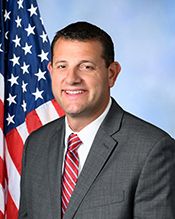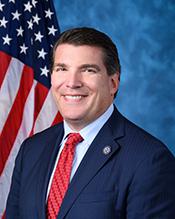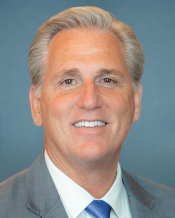0
0
0
Clean Energy Protection Act
12/31/2022, 5:07 AM
Summary of Bill HR 4394
The Clean Energy Protection Act, also known as Bill 117 hr 4394, is a piece of legislation currently being considered by the US Congress. The main goal of this bill is to promote the use of clean energy sources and reduce the country's reliance on fossil fuels.
One of the key provisions of the Clean Energy Protection Act is the establishment of a Clean Energy Standard, which would require a certain percentage of electricity to be generated from renewable sources such as wind, solar, and hydroelectric power. This standard aims to reduce greenhouse gas emissions and combat climate change.
Additionally, the bill includes measures to incentivize the development and deployment of clean energy technologies, such as tax credits for renewable energy projects and funding for research and development in the clean energy sector. It also seeks to create jobs in the clean energy industry and promote economic growth. Furthermore, the Clean Energy Protection Act includes provisions to protect public health and the environment by regulating emissions from power plants and other sources of pollution. It also aims to improve energy efficiency in buildings and transportation, reducing energy consumption and lowering costs for consumers. Overall, the Clean Energy Protection Act is a comprehensive piece of legislation that seeks to transition the United States towards a more sustainable and environmentally friendly energy system. It addresses key issues such as climate change, air pollution, and energy security, and aims to create a cleaner and more prosperous future for all Americans.
One of the key provisions of the Clean Energy Protection Act is the establishment of a Clean Energy Standard, which would require a certain percentage of electricity to be generated from renewable sources such as wind, solar, and hydroelectric power. This standard aims to reduce greenhouse gas emissions and combat climate change.
Additionally, the bill includes measures to incentivize the development and deployment of clean energy technologies, such as tax credits for renewable energy projects and funding for research and development in the clean energy sector. It also seeks to create jobs in the clean energy industry and promote economic growth. Furthermore, the Clean Energy Protection Act includes provisions to protect public health and the environment by regulating emissions from power plants and other sources of pollution. It also aims to improve energy efficiency in buildings and transportation, reducing energy consumption and lowering costs for consumers. Overall, the Clean Energy Protection Act is a comprehensive piece of legislation that seeks to transition the United States towards a more sustainable and environmentally friendly energy system. It addresses key issues such as climate change, air pollution, and energy security, and aims to create a cleaner and more prosperous future for all Americans.
Congressional Summary of HR 4394
Clean Energy Protection Act
This bill sets forth provisions to enable the Diablo Canyon nuclear power plant in California to remain in operation.
Specifically, it directs California and the Nuclear Regulatory Commission to issue any permits or licenses that are necessary to enable the power plant to remain in operation.
Read the Full Bill
Current Status of Bill HR 4394
Bill HR 4394 is currently in the status of Bill Introduced since July 9, 2021. Bill HR 4394 was introduced during Congress 117 and was introduced to the House on July 9, 2021. Bill HR 4394's most recent activity was ASSUMING FIRST SPONSORSHIP - Mr. Calvert asked unanimous consent that he may hereafter be considered as the first sponsor of H.R. 4394, a bill originally introduced by Representative Nunes, for the purpose of adding cosponsors and requesting reprintings pursuant to clause 7 of rule XII. Agreed to without objection. as of January 13, 2022
Bipartisan Support of Bill HR 4394
Total Number of Sponsors
1Democrat Sponsors
0Republican Sponsors
1Unaffiliated Sponsors
0Total Number of Cosponsors
20Democrat Cosponsors
0Republican Cosponsors
20Unaffiliated Cosponsors
0Policy Area and Potential Impact of Bill HR 4394
Primary Policy Focus
EnergyPotential Impact Areas
- California
- Electric power generation and transmission
- Licensing and registrations
- Nuclear power
Alternate Title(s) of Bill HR 4394
To ensure the continued operation of the Diablo Canyon power plant, and for other purposes.
Clean Energy Protection Act
Clean Energy Protection Act
Comments
Sponsors and Cosponsors of HR 4394
Latest Bills
Providing amounts for the expenses of the Committee on Ethics in the One Hundred Nineteenth Congress.
Bill HRES 131December 12, 2025
Providing for congressional disapproval under chapter 8 of title 5, United States Code, of the rule submitted by the Bureau of Land Management relating to "Central Yukon Record of Decision and Approved Resource Management Plan".
Bill HJRES 106December 12, 2025
Expressing the sense of the House of Representatives in condemning the Government of the People's Republic of China for its harassment and efforts to intimidate American citizens and other individuals on United States soil with the goal of suppressing speech and narratives the People's Republic of China finds unwelcome.
Bill HRES 130December 12, 2025
Providing for congressional disapproval under chapter 8 of title 5, United States Code, of the rule submitted by the Bureau of Land Management relating to "North Dakota Field Office Record of Decision and Approved Resource Management Plan".
Bill HJRES 105December 12, 2025
Providing for congressional disapproval under chapter 8 of title 5, United States Code, of the rule submitted by the Bureau of Land Management relating to "Miles City Field Office Record of Decision and Approved Resource Management Plan Amendment".
Bill HJRES 104December 12, 2025
Providing amounts for the expenses of the Select Committee on the Strategic Competition Between the United States and the Chinese Communist Party in the One Hundred Nineteenth Congress.
Bill HRES 104December 12, 2025
Critical Access for Veterans Care Act
Bill S 1868December 12, 2025
OATH Act of 2025
Bill S 1665December 12, 2025
A bill to extend the authority for modifications to the Second Division Memorial in the District of Columbia.
Bill S 1353December 12, 2025
Saving Our Veterans Lives Act of 2025
Bill S 926December 12, 2025




